Beautiful Japanese — Words That Hold Landscapes
Japanese is a beautiful language.
We use it every day without thinking, yet every so often a single word makes us pause, and we suddenly find ourselves struck by the richness and emotional depth of its expression.
Language gives shape to the way people see the world and what they value.
It is more than a simple tool for communication: behind its vocabulary, grammar, and sounds lie the overlapping layers of a people’s history, climate, and worldview.
When we learn other languages, we begin to see how each one slices up the world and tries to depict it.
The same event, described in a different tongue, will be framed differently and carry different nuances.
I have lost count of how many times these differences have surprised me.
Among them all, Japanese feels particularly delicate and powerful in its ability to summon a scene.
There are words that, in a single breath, unfold a seasonal landscape, or that capture subtle emotional tremors invisible to the eye.
Many expressions are so fine-grained and nuanced that, when we try to translate them, something important inevitably slips through the cracks.
Japanese is not made up of sounds and characters alone.
Behind them dwell the landscapes of this country and the hearts of its people.
Here, through a few examples of such “beautiful Japanese,” I would like to explore the worlds of scenery and emotion that unfold behind the words.
蝉しぐれ (semi-shigure)
On a midsummer afternoon, step into a forest or park and you are engulfed in the chorus of cicadas pouring down from all sides.
In Japanese, this enveloping chorus of cicadas is called 蝉時雨 (semi-shigure).
Shigure originally refers to the fine, intermittent showers that fall in late autumn and early winter.
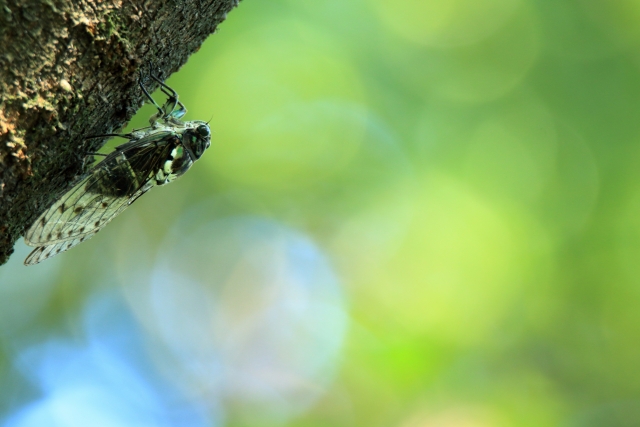
Shigure originally refers to the fine, intermittent showers that fall in late autumn and early winter.
By layering that word for “rain” onto the sound of cicadas, Japanese captures in a single term the density of cries that seem to rain down from the sky and the sense that everything around you is momentarily drowned out.
Semi-shigure is more than just a “summery sound.”
The cicadas’ voices, raised all at once in the brief height of their lives, make us sense both the fierce surge of生命 and the stillness that will soon follow.
Behind their powerful chorus, there is always a faint trace of transience.
逢魔が時 (ōmagatoki)
There is a time of day that feels more mysterious than any other.
At dusk—when the light fades, and the boundary between day and night grows indistinct—Japanese calls this moment 逢魔が時 (ōmagatoki).

A mysterious hour where light and darkness blend, as if standing on the threshold between reality and unreality.
In older usage, it was written 大禍時 (“the time of great calamity”) and referred to the dim hour of evening when misfortune was thought likely to occur.
Later, 禍 (calamity) came to be associated with 魔 (evil spirits), giving rise to spellings such as 大魔が時 or 逢魔が時, and the idea of “the time when one encounters demons” gained prominence.
At that moment when light and darkness mingle, even a familiar landscape can suddenly appear like another world.
In people’s hearts, an indefinable unease and a strange, almost nostalgic feeling arise at the same time.
Ōmagatoki is a time that lies in the in-between—between reality and unreality, this shore and the other.
Japanese quietly encapsulates that vague, uncanny sensation in this single word.
木漏れ日 (komorebi)
On a calm, clear day, gentle beams of light fall to the ground through gaps in the trees.
The word that captures this scene in a single stroke is 木漏れ日 (komorebi).
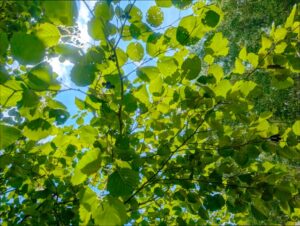
My own fascination with Japanese as a language was sparked by this very word.
“Light spilling through the leaves” and even the warm atmosphere filling that space—komorebi expresses all of this with astonishing precision in one term.
I still remember the strong impression it made on me.
Rendered in English, it becomes something like
sunlight filtering through the leaves of trees.
As a description, this certainly conveys the scene, but it fails to fully carry the warmth and emotional tone in the Japanese word.
Komorebi holds within it not only the light itself, but also the softness of the air and the gentle flow of time in that place.
The word komorebi is, in itself, a beautifully concise way to say “sunlight that slips between the leaves of trees, along with the warmth that fills that space.”
A landscape and a feeling rise up together as one.
Komorebi is a quintessential example of the distinctive beauty that Japanese can achieve.
夜の帳 (yoru no tobari)
Originally, 帳 (tobari) refers to a cloth used to divide or veil a space.
It can be used for stage curtains, mosquito nets, or bamboo blinds, all serving to “遮る”—softly separating or obscuring what lies beyond.
In Japanese, the arrival of night is described as 「夜の帳が下りる」—“the night’s curtain falls.”
It is as if a piece of fabric were gently laid over the bright scenery of day, with sounds and light slowly absorbed.
This expression treats “nightfall” not as a mere shift in time, but as a scene that seeps into the heart—and therein lies its beauty.
Night descends like the curtain of a stage, gradually blurring the outlines of the world.
As light and sound recede, silence slowly fills the space.
The phrase yoru no tobari quietly scoops up that fleeting moment.

雪化粧 (yukigeshō)
雪化粧 (yukigeshō) describes the sight of mountains, trees, rooftops, and more lightly covered with snow.
Like a dusting of white powder on the landscape, the gentle whiteness wraps everything and quietly announces winter’s arrival.
When we say “the mountain has put on a snow makeup,” rather than simply “snow has piled up,” Japanese is treating nature not as a neutral backdrop but as a being with its own expression.
In this phrasing, we can sense a gaze that reveres nature and finds beauty in its changes.
When mountains that have shed their late autumn colors appear suddenly white one morning, people say, “The mountain has done its snow makeup.”
Those few words do more than report a change in weather—they softly convey the stillness and solemnity in the scene, and the feeling of delight in the turning of the seasons.
Each time it snows, the world shows a different face.
The word yukigeshō gently wraps up the fleeting yet noble beauty of such moments.
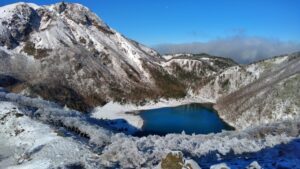
Snow-covered mountains.
もののあはれ (mono no aware)
もののあはれ (mono no aware) refers to the sensibility that pervades Heian-period tales and waka poetry—a heart moved by the shifting nature of all things.
The Edo-period scholar Motoori Norinaga later popularized the term as a key to reading The Tale of Genji.
It does not refer to clearly defined emotions such as joy or sorrow.
Rather, it is the indefinable stirrings of the heart: the quiet ache felt at the turn of the seasons, or the memories stirred by an ordinary scene.
It is a sensibility that contemplates the fact that life and nature are forever changing, and that calmly seeks to embrace the beauty and poignancy that seep from that impermanence.
The human heart cannot truly be explained in stark black and white.
Joy and sadness can coexist in a single experience, and not every feeling can be put into words.
Precisely because everything is always shifting and transforming, each passing moment can feel all the more precious.
Within the words mono no aware, this aspect of Japanese sensibility breathes quietly.
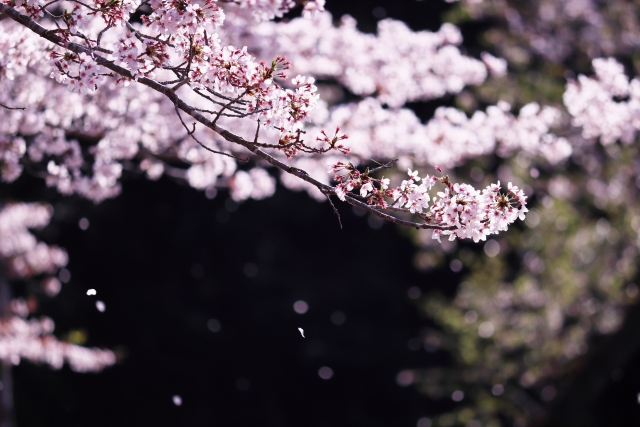
In Japanese, landscapes, time, and the subtle tremors of the heart are layered together within the sound of a single word.
Scenes that would require long explanations in other languages can, in Japanese, rise up vividly from just one expression.
This is more than a difference in linguistic form; it reflects differences in how we look at the world and where we choose to rest our attention.
The ongoing effort to listen closely to transient nature and fleeting emotions—and to mirror them in words—has shaped the Japanese language as it is today.
There is a world that only Japanese can describe.
Becoming aware of that richness gently awakens the aesthetic that lies dormant within those who speak it.

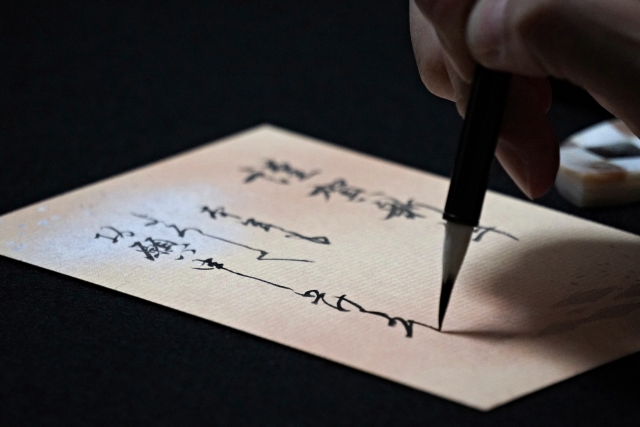


コメント